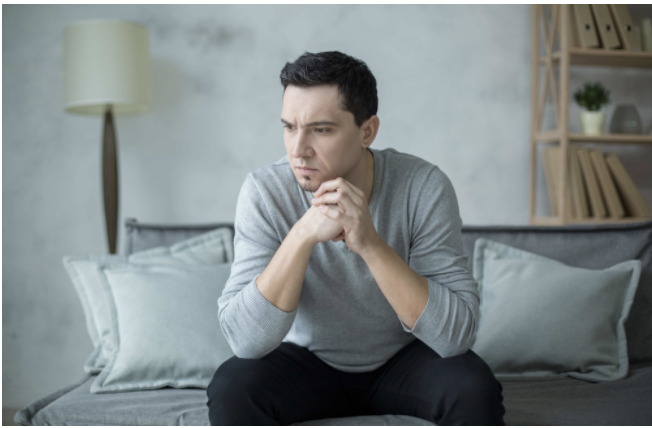Panic attacks are difficult and often scary experiences. For those who struggle with this symptom of anxiety, there is hope for addressing it skillfully. The first step in addressing panic attacks is understanding what they are, how they look, and what causes them. If you can anticipate the phases of the attack, you have the power to move through it using a variety of coping strategies. Our team of Chico mental health professionals at Therapeutic Solutions wants to support you in finding safe, healthy ways to cope with the experience of panic and anxiety as you work toward mental wellness.
Contact our team at (530) 899-3150.
The Phases of a Panic Attack
There are typically 7 phases to a panic attack, but not all attacks are the same. Some may vary in order and some may skip a phase. The key is to pay attention to your own attacks to see if you experience symptoms in a particular pattern. By tracking your symptoms, you will be better equipped to recognize and respond to them early.
If you are triggered by discussion of panic attacks, consider reading this blog with a loved one who can work with you as you read through it.
The Phases of a Panic Attack include:
- Onset of the attack: You may be sitting at your desk at work, or walking through the park, and suddenly despite it being a normal day, things start to shift. It’s almost as if you are struck with sadness and despair, and you may have no specific reason for it. That said, a difficult or stressful experience can also trigger these symptoms.
- Desire to escape: If you search for a way out, or a distraction, right after the attack begins, this is the second stage of anxiety. People in this phase often feel that they must hide, such as climbing into bed or going outside to breath. While the urgency to “flee” may be strong, it does not often lead to relief of symptoms.
- Discomfort with no relief: No matter what you do, there is no respite from the feeling of distress. You can’t seem to get to the root of it to be able to stop it. You may be physically restless or searching for release, and quite often you are not sure how to vocalize this feeling. Dissociation from reality may occur, causing you to feel like you are not fully in your body or in control of the experience.
- Physical symptoms: The physical response to your brain’s distress may include sweating, stuttering, heavy or rapid breathing, increased heart rate, nausea and dizziness. Your vision may be blurred, or you may find that you are blinking at a faster pace than normal. You may also experience a dry mouth or become tearful. Sometimes, your extremities stiffen and cramp up, inhibiting movement. These physiological responses are the result of the fear center of the brain being activated. While they do not match the actual danger or threat of a situation, they are powerful responses that influence our perceived danger or threat.
- Fear that there will be no end: At this point, you wonder if you need to go to the hospital or if the feelings will ever go away. You are desperate for help, escape or relief. This symptom often escalates the panic to a sense of dread, worry, and irrational thoughts about what may happen. Some people experience overwhelming fear that they may die, though panic attacks are not actually life-threatening.
- The tipping point: This may be the time that you start attempting every coping mechanism that you can, from slowing your breath to curling into a ball to taking a walk to distracting yourself. For short-term relief, some individuals may attempt to cope using substances. However, this often escalates symptoms over time and does not address the root of the attack or the internal resources possessed to deal with it.
- The end: You finally begin to feel “normal” again and your heart rate lowers. Your breathing slows, and your mind can focus on your external reality with more clarity. You may begin to feel calm or relieved, and able to engage in everyday tasks with more ease. While concern about the experience may still exist, the overwhelming symptoms have ended.
The Physical Symptoms of a Panic Attack
Not all panic attacks are mental in nature. You may not even be thinking of a stressful experience or feeling mentally overwhelmed. Some people experience strictly physical panic attacks while others experience a combination of physical and mental symptoms.
A panic attack may feel like:
- Chest pain, tightness and heaviness
- Sweating
- Feeling hyper or filled with energy
- Dizziness
- Numbness or cramping in hands, feet and limbs
- Feeling like you need to use the restroom
- Upset stomach
- Difficulty breathing
- Dry mouth
- Hot and cold flashes
What Causes Panic Attacks?
There are 3 root causes to panic attacks that have individual factors: genetic predisposition, anxiety stemming from childhood, and response to the challenges of adulthood. These factors all have one thing in common and it is: They are not your fault. The root causes of panic attacks are also clues as to what may trigger an attack now. For example, attacks that stem from childhood may be triggered by encounters with family members who caused harm in your early years, or from situations that remind you of things that happened. Panic attacks that stem from specific challenges associated with adulthood can be anticipated or avoided if you employ the right coping tools and can predict the triggers.
Working Through Your Panic Attack: Coping Skills
In addition to recognizing the stages of a panic attack you experience, we recommend employing one or more of the skills below to address your symptoms. These skills can be practiced in a safe environment with a clinical professional, or in the privacy of your own home.
- Use the senses method. Think of three things you can see, three you can feel, three you can hear and three you can smell. By focusing on the present and the stimulation around you, you can bring yourself back to “reality” and out of your head. Drinking a sip of cool water can enhance your sensations and may support the senses method.
- Ground yourself: Picture your feet rooting into the ground. Close your eyes and sink into the earth, feeling a solid foundation below your feet and allowing the earth to hold you. If possible, lay down or sit down so more of your body is grounded. Feel your body touching the surfaces it is in contact with – the backs of your legs, your knees, your hands, or whatever body part is connected with the earth.
- Tense and Relax your muscles: Starting from your toes, tense and release each muscle group in your body. Move from your feet, to your calves, to your thighs, up through your torso and all the way to your facial muscle. If you are in public, you can even do this without moving, as the conscious thought of doing it has the same effect as physically doing it.
As you learn about anxiety disorders and their causes, you can begin take back your power and learn what works for you. If you need more in-depth support, the team at Therapeutic Solutions is here for you. We understand how scary and stressful anxiety can be and that the desire to escape it may be strong. However, learning to move through the experience is key to long-term wellness.
Contact our team for more healthy coping skills at (530) 899-3150.













